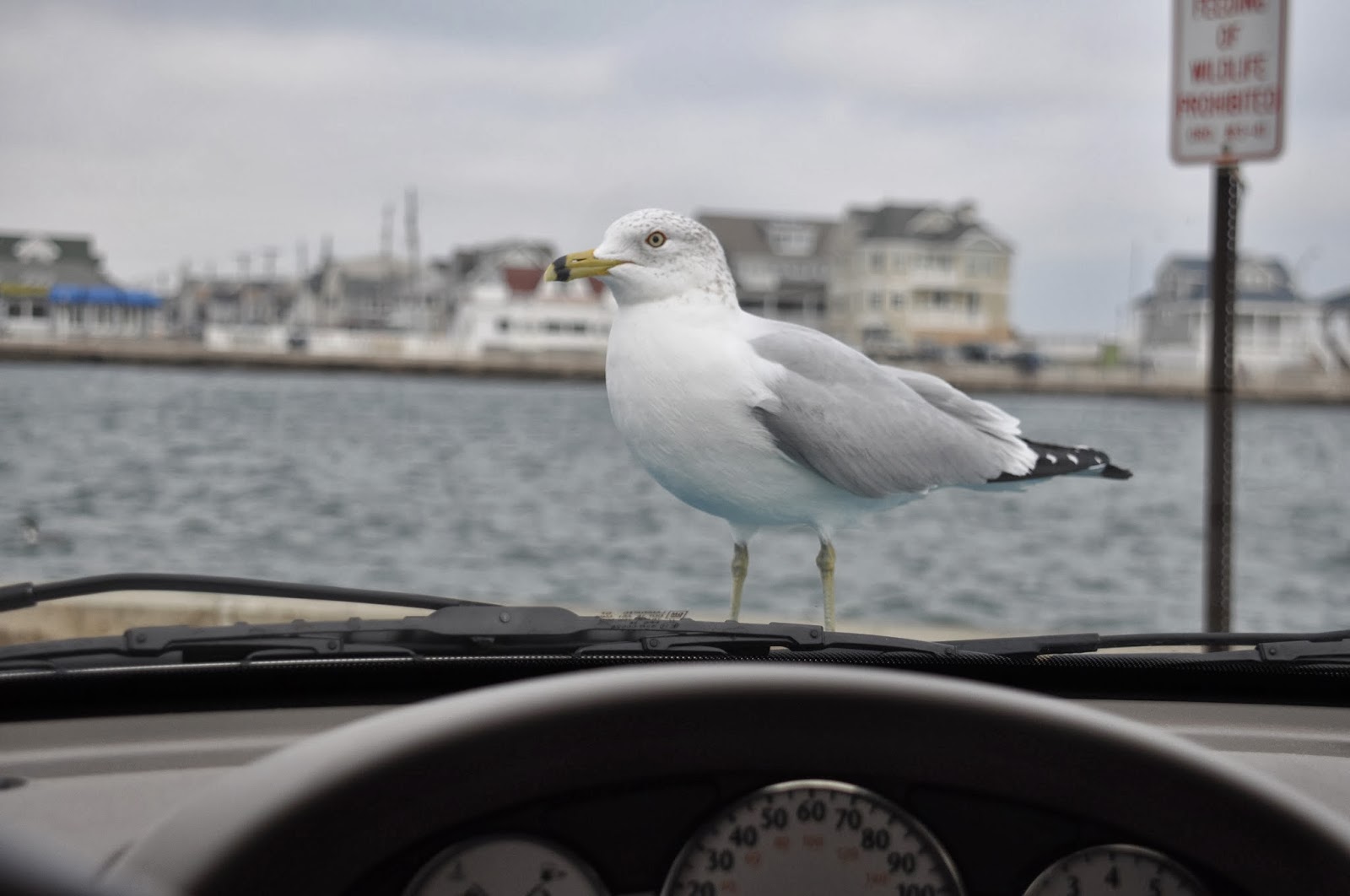 |
| Pine Warbler Male #2 |
 |
| Pine Warbler Male #1 |
 |
| Hen Common Goldeneye (upper left) with Buffleheads & Hooded Mergansers, Great Bay Blvd, 1/31/14 |
Counties birded:
New Jersey: Atlantic, Burlington, Cape May, Mercer, Monmouth, Ocean
New York: New York
Species Location
|
Snow Goose Assunpink
WMA
|
Brant Sunset Lake
|
Canada Goose Cape May
Point SP
|
Mute Swan Cape May
Point SP
|
Tundra Swan White's
Bogs
|
Wood Duck Central Park
|
Gadwall Cape May Point
SP
|
Eurasian Wigeon Lighthouse Pond
|
American Wigeon Lighthouse
Pond
|
American Black Duck
Riverfront Landing
|
Mallard Cape May Point
SP
|
Northern Shoveler Lighthouse
Pond
|
Northern Pintail Cape
May Point SP
|
Green-winged Teal Brigantine
|
Canvasback Riverfront
Landing
|
Redhead Lighthouse
Pond
|
Ring-necked Duck Lighthouse
Pond
|
Greater Scaup Little
Silver Lake
|
Lesser Scaup Lighthouse
Pond
|
King Eider
Nummy Island--Free Bridge
|
Common Eider Whilldin
Ave. dune crossing
|
Surf Scoter Two Mile
Beach
|
Black Scoter Two Mile
Beach
|
Long-tailed Duck Two
Mile Beach
|
Bufflehead Sunset Lake
|
Common Goldeneye Lily
Lake--Forsythe
|
Hooded Merganser Cape
May Point SP
|
Common Merganser
Assunpink WMA
|
Red-breasted Merganser
Great Bay Bvld. WMA
|
Ruddy Duck Cape May
Point SP
|
Ring-necked Pheasant
Warren Grove
|
Wild Turkey Rt. 70
|
Red-throated Loon Two
Mile Beach
|
Common Loon Sunset
Lake
|
Pied-billed Grebe
Double Trouble State Park
|
Horned Grebe Sunset
Lake
|
Red-necked Grebe
Manasquan Inlet
|
Double-crested Cormorant
Cape May Point SP
|
Great Cormorant Two
Mile Beach
|
Great Blue Heron Cape
May Point SP
|
Black Vulture Brynmore
/ Big Woods Rd. fields
|
Turkey Vulture Cape
May Point SP
|
Northern Harrier Cape
May Point SP
|
Cooper's Hawk Lighthouse
Pond
|
Bald Eagle Cape May
Bridge over canal
|
Red-shouldered Hawk Cape
May Point SP
|
Red-tailed Hawk Whilldin
Ave. dune crossing
|
American Coot Lighthouse
Pond
|
American Oystercatcher
Nummy Island--Free Bridge
|
Black-bellied Plover Great
Bay Bvld. WMA
|
Semipalmated Plover
Stone Harbor Point
|
Killdeer Great Bay
Bvld. WMA
|
Ruddy Turnstone Two
Mile Beach
|
Sanderling Two Mile
Beach
|
Dunlin Two Mile Beach
|
Purple Sandpiper Two
Mile Beach
|
Bonaparte's Gull Two
Mile Beach
|
Ring-billed Gull Cape
May Point SP
|
Herring Gull Lighthouse
Pond
|
Lesser Black-backed Gull
Great Bay Bvld. WMA
|
Great Black-backed Gull
Nummy Island--Free Bridge
|
Rock Pigeon Warren
Grove
|
White-winged Dove Whilldin Ave. dune crossing
|
Mourning Dove Cape May
Pt College Streets
|
Snowy Owl Two
Mile Beach
|
Rufous Hummingbird Cape May Pt Coral & Cambridge
|
Belted Kingfisher
Horicon Lake
|
Red-bellied Woodpecker
35 Sunset Rd
|
Yellow-bellied Sapsucker
Crestwood Village
|
Downy Woodpecker Cape
May Point SP
|
Merlin Imlaystown
Road, East Windsor
|
Peregrine Falcon Brigantine
|
Blue Jay Lighthouse
Pond
|
American Crow Cape May
Point SP
|
Horned Lark Imlaystown
Road, East Windsor
|
Carolina Chickadee Whilldin
Ave. dune crossing
|
Tufted Titmouse 35
Sunset Rd
|
Red-breasted Nuthatch
Cape May Pt College Streets
|
White-breasted Nuthatch
35 Sunset Rd
|
Brown Creeper
Assunpink WMA
|
Carolina Wren 35
Sunset Rd
|
Golden-crowned Kinglet
Whiting power line cut
|
Ruby-crowned Kinglet
Crestwood Village
|
Eastern Bluebird
Assunpink WMA
|
Hermit Thrush Crestwood
Village
|
American Robin Cape
May Pt College Streets
|
Gray Catbird Cape May
Point SP
|
Brown Thrasher Brigantine
|
Northern Mockingbird
Cape May Pt College Streets
|
European Starling Cape
May Point SP
|
Cedar Waxwing Cape May
Pt College Streets
|
Snow Bunting Stone
Harbor Point
|
Pine Warbler 35
Sunset Rd
|
Yellow-rumped Warbler Cape
May Point SP
|
Eastern Towhee
Assunpink WMA
|
Savannah Sparrow Brigantine
|
Fox Sparrow Assunpink
WMA
|
Song Sparrow 35 Sunset
Rd
|
Swamp Sparrow Horicon
Lake
|
White-throated Sparrow
35 Sunset Rd
|
White-crowned Sparrow
Assunpink WMA
|
Dark-eyed Junco Cape
May Pt College Streets
|
Northern Cardinal Cape
May Pt College Streets
|
Painted Bunting Whilldin Ave. dune crossing
|
Red-winged Blackbird
Assunpink WMA
|
Common Grackle Great
Bay Bvld. WMA
|
Boat-tailed Grackle
Nummy Island--Free Bridge
|
Brown-headed Cowbird
Assunpink WMA
|
Baltimore Oriole Central Park
|
House Finch Cape May
Pt College Streets
|
American Goldfinch 35
Sunset Rd
|
House Sparrow Whilldin
Ave. dune crossing
|















